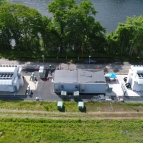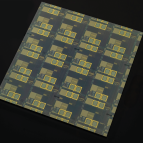Applied Resilience for Mission Systems

The Department of War (DoW) faces systemic challenges in improving the resilience of its mission systems across all five warfighting domains (cyber, space, air, land, and sea). While most mission systems are now software-intensive, many supporting processes are not yet aligned to this reality. Even newly developed systems frequently lack the robustness and responsiveness to withstand today’s adversaries, and these systems are often costly to sustain and adapt to the changing environment. To meet their warfighting objectives, mission owners must change how they build, operate, and sustain their systems. Doing so will allow them to recognize and adapt to disruptions (including defects, failures, attacks, and changes).
Through the Applied Resilience for Mission Systems (ARMS) program, we’re learning how to improve the robustness, responsiveness, adaptability, and sustainability of software-intensive mission systems. ARMS draws on resilience concepts — encompassing people, process, and technology — from the commercial and academic worlds, and then learns how to adapt these concepts for use in the DoW. From these lessons, we’re producing guidance for program managers, acquisition organizations, builders, operators, and sustainers, and using testbeds to deploy mission systems and validate resilience concepts.
Through ARMS, we’re helping the DoW adopt five key principles: 1) embrace failure, 2) always be learning, 3) improve the speed of all processes, 4) manage tradeoffs, and 5) plan for change. These goals require adapting operation and engineering approaches from the commercial world, changing the defense community's perspective on failure, improving the management of complexity and cost of ownership, improving mission-oriented assessments, and improving how defense organizations learn and adapt.
Read more
Infrastructure Automation (PDF)
Chaos Engineering and the Disruption Platform (PDF)



